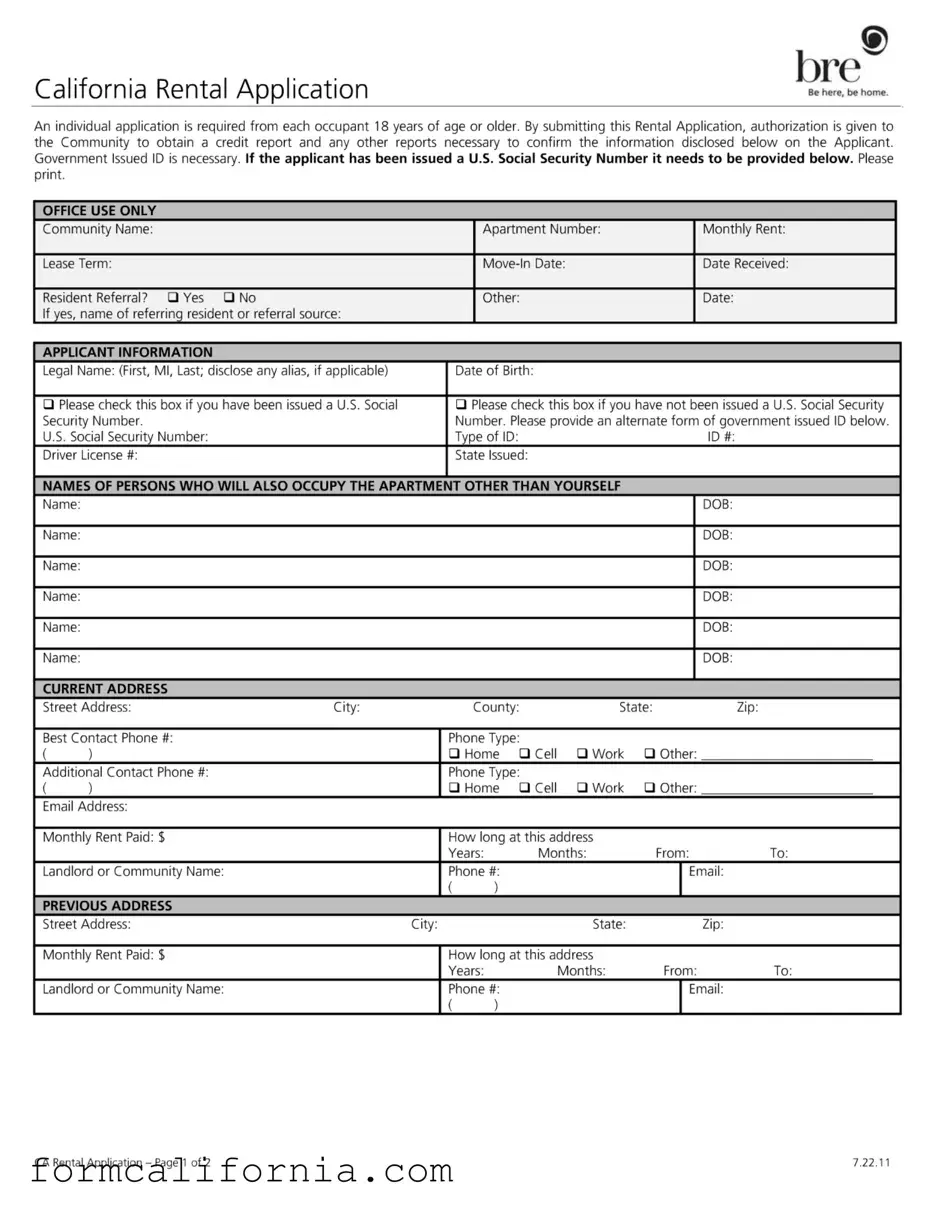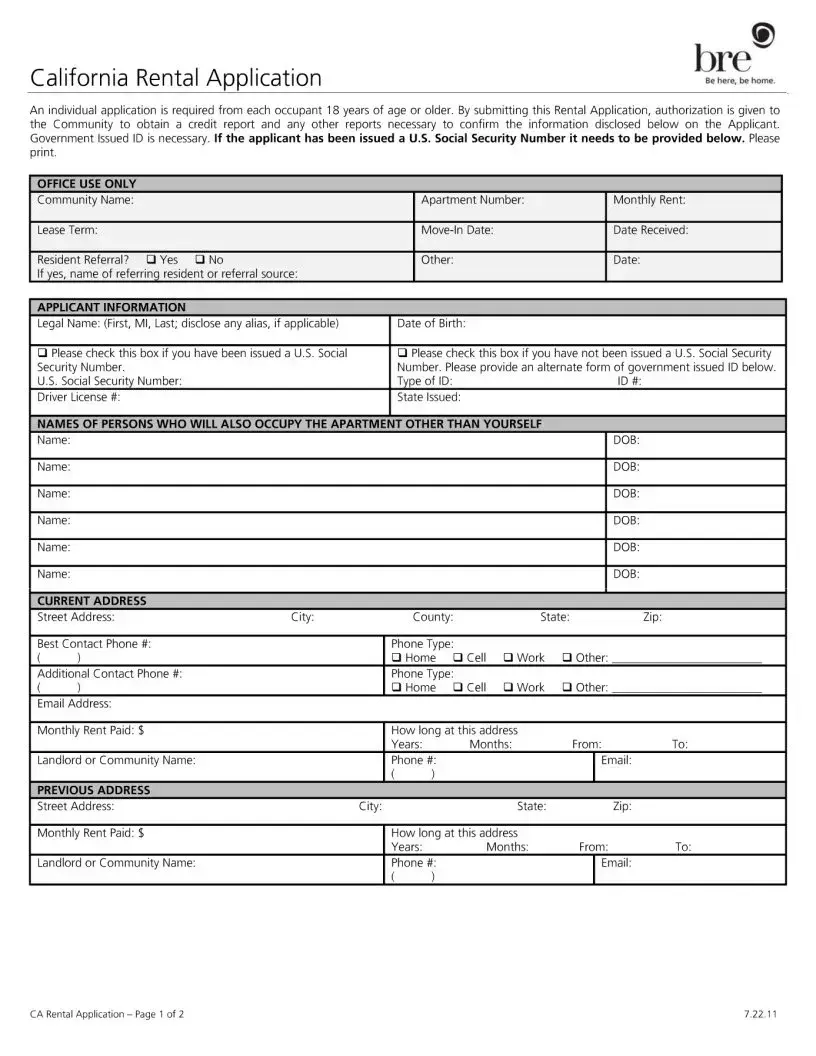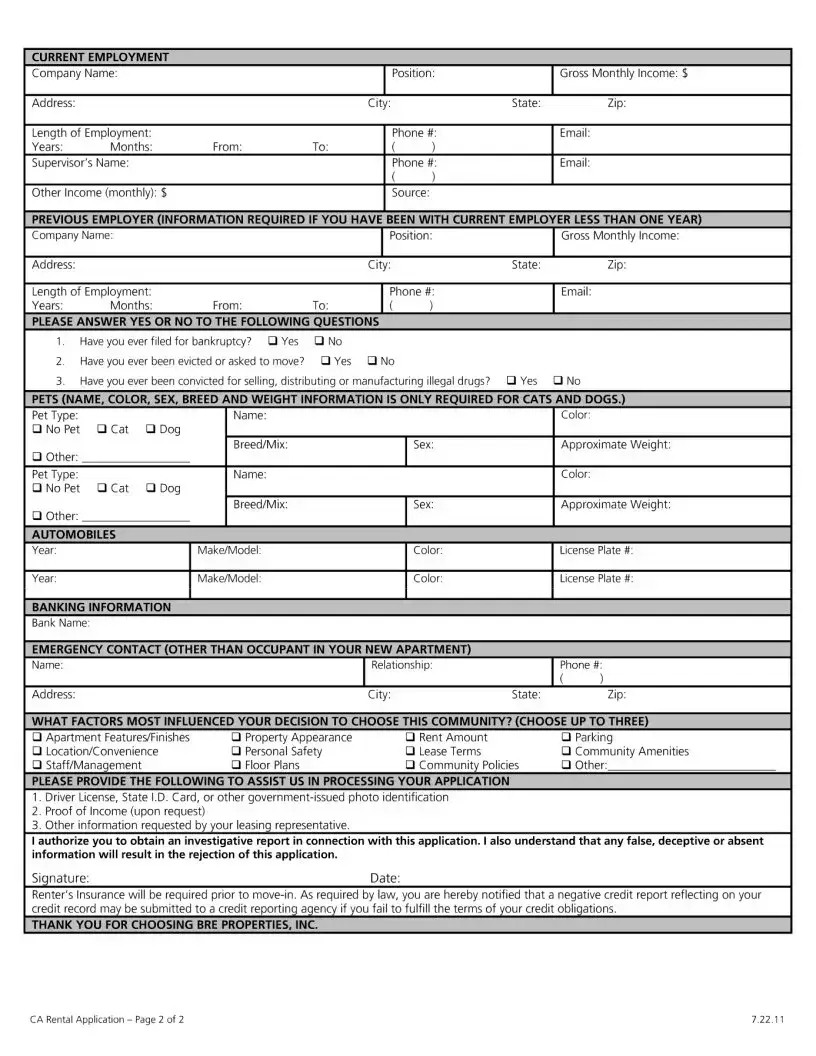The California Rental Application form shares similarities with the Residential Lease Agreement, primarily in the type of information collected about the parties involved. A Residential Lease Agreement expands upon the rental application by formalizing the rental terms, payment details, and responsibilities of each party into a legally binding contract. It incorporates the applicant's information to establish a tenant-landlord relationship, similar to how the application initiates the review process by gathering prospective tenants' personal and financial details.
Similar to Credit Report Authorization forms, the California Rental Application also involves the consent of the applicant to allow the landlord to perform credit checks. Credit Report Authorization forms are specifically designed to obtain permission from the individual to access their credit history, which is a requirement included in the rental application. Both documents are essential for landlords to evaluate an applicant’s creditworthiness before making a leasing decision.
The Co-signer Agreement is another document related to the California Rental Application form. When an applicant might not meet the rental criteria, a co-signer agreement can be required. It involves a third party agreeing to assume financial responsibility should the applicant fail to pay their rent. The rental application initiates the process by identifying when such an agreement might be necessary based on the provided information.
Employment Verification Forms, like the rental application, collect information about an applicant's source of income and job stability. While the rental application may ask for basic employment details, an Employment Verification Form seeks to confirm this information directly with the employer. This cross-verification helps landlords ensure that applicants have the means to fulfill their rental obligations.
The Guarantor Form is closely associated with the rental application process as well. In instances where an applicant may not fully meet the leasing requirements, a guarantor form provides a way for someone else (the guarantor) to guarantee the rent. This document supplements the rental application by offering a financial safety net to the landlord, similar to a co-signer agreement.
Rental History Verification forms delve into the applicant’s past tenancy behaviors, akin to the background check portion of the California Rental Application. These forms are sent to previous landlords to verify the applicant's rental history, including payment punctuality and tenancy conduct. It complements the application by providing a more detailed view of the applicant's reliability as a tenant.
Property Inspection Reports, while not part of the initial rental application process, become relevant once an application is approved. These reports document the condition of the property before move-in and compare it with the state of the property at move-out. The rental application is the starting point that eventually leads to the need for such detailed inspections to ensure the property is maintained appropriately.
Finally, the Pet Agreement can be akin to the California Rental Application form if the applicant has pets. This agreement outlines the conditions and rules regarding keeping pets on the rental premises. Similar to the rental application gauging preliminary eligibility, a Pet Agreement assesses and sets terms for the responsible management of pets by the tenants, ensuring clarity and expectations are established upfront.


